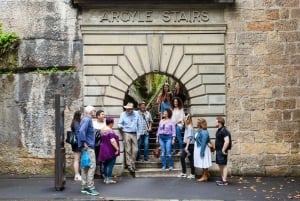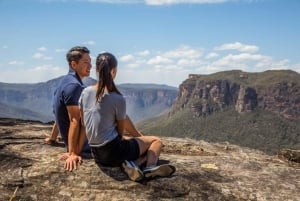Australia Information
Most tourists visiting the country start their travel arrangements to Australia in Sydney, because as proud Sydney-siders so often say, you haven’t seen the best of Australia if you haven’t been to Sydney!
| Capital: | Canberra |
| Number of States: | 6 – New South Wales (NSW), Queensland (QLD), Western Australia (WA), Tasmania (TAS), Victoria (VIC) and South Australia (SA) |
| Number of Territories: | 2 – Northern Territory (NT) and Australian Capital Territory (ACT) |
| Currency: | Australian Dollar |
| Population: | Approximately 21 000 000 |
| Language: | English is the official language, however Australia is home to a huge number of immigrants who speak many different languages |
| Religion: | Predominantly Christian |
| Largest City: | Sydney |
| Government: | Constitutional monarchy, with Governor General and Prime Minister |
| Internet Top Level Domain: | .au |
| Calling Card: | +61 |
| Time Zone: | Australian time zones vary from state to state so be sure to check this when you are travelling by plane! |
For detailed information about Australia, visit: about-australia
 | • Map of New South Wales (NSW) |
The Aboriginal and Torres Strait Islander people were the first to colonise Australia, between 42 000 and 48 000 years ago. They spoke over a hundred dialects and differed culturally between each region. It was not until 1770 that James Cook first arrived to Australian shores and in 1788, the First Fleet arrived with 11 ships an approximately 1500 people. This day is when Australians like to celebrate Australia Day.
Approximately 160 000 convict men and women were brought over to Australia for petty crimes as small as stealing a loaf of bread. Free immigration began in the 1790s, and in the 1850s, the gold rush saw a huge influx of migrants to Australia, particularly from those of Chinese descent.
The Commonwealth of Australia was officially declared in 1901 with the federation of all six states under one nation. Australia willingly participated in the First World War, joining forces with New Zealand in what became known as a military pact called ANZAC. An estimated 60 000 young men were killed in the war, leaving the nation devastated and subdued. Later again, WWII and the Vietnam War left devastating effects on the nation.
In the post war period, thousand of immigrants arrived to Australian shores and the nation began to separate itself from Mother England, emerging from the wars with its own growing national identity. Australia is now home to a multicultural blend of people from all corners of the globe, including Europe, America, Africa and the Middle East.
 |  |
| by Sarah_Ackerman @ flickr.com |
Australia is still governed as a monarchy, however the United Kingdom has very little influence on the current political agenda. The Queen is represented by the Governor General. Australian government is founded on the values of religious tolerance, freedom of speech, press and association and the rule of law.
By constitution, Australian government is set up in three chapters, the legislature, the executive and the judiciary. There are two houses – the House of Representatives where the Government and Leader of the Opposition are formed, and the Senate with six representatives from each state and two from each territory.
The current Prime Minister is Julia Gillard from the Labour Party, with Tony Abbott the Opposition Leader for the Liberal Party. The other political parties in Australia include the Nationals, the Greens, Family First and the Democrats. Voting is compulsory for all citizens over the age of 18 and anyone who does not do so, risks a fine.
 |  |
| by Vermin Inc @ flickr.com | by Kirsty Komuso @ flickr.com |
Australia is built on a laissez-faire capitalist economy and in recent years, it has become one of the strongest in the world in terms of high growth, low inflation and low interest rates. Australia is the world’s largest exporter of coal, wool, alumina, diamonds, sheep, lead, refined zinc ores and mineral sands. The agriculture and mining sectors account for 58% of the nation’s exports. Australia also exports veal, lamb, sugar, nickel, beef, mutton and iron ore. It’s largest export markets are to Japan, China, the US, South Korea and New Zealand.
 |
| by lateplate @ flickr.com |
Australia is a unique blend of multicultural races from across the world. Since 1945, over 6 million people from 200 countries have come to Australia as new settlers, bringing with them a delightful mix of culture and tradition. This international blend has added to Australia’s rich national flavour, with migrants making up for approximately one quarter of the nation’s population.
| • Employment in Australia | • How to immigrate to Australia |
 |  |
| by Toby Hudson @ wikimedia commons | by timbomb @ flickr.com |











